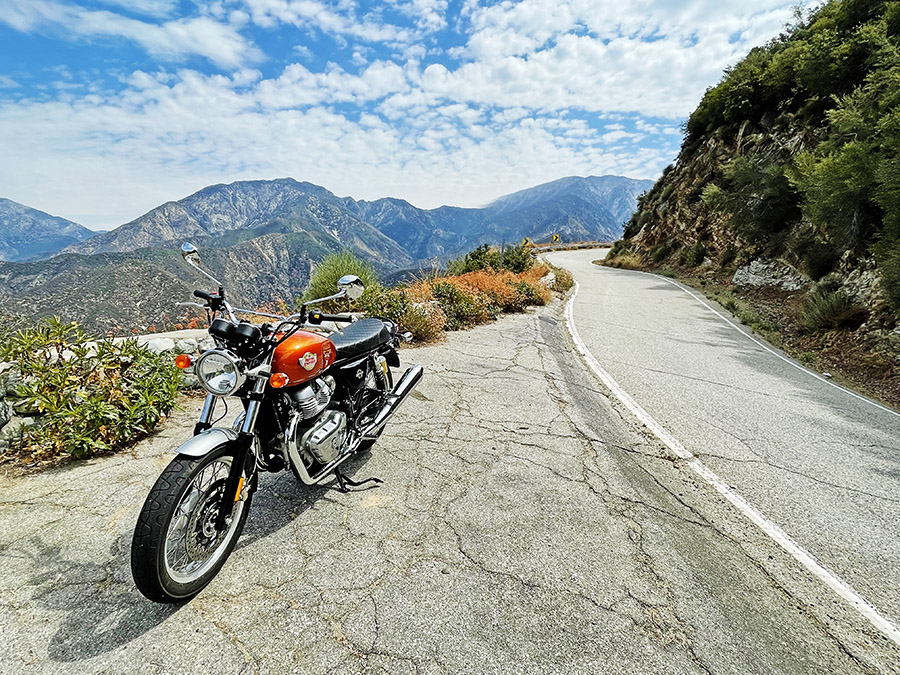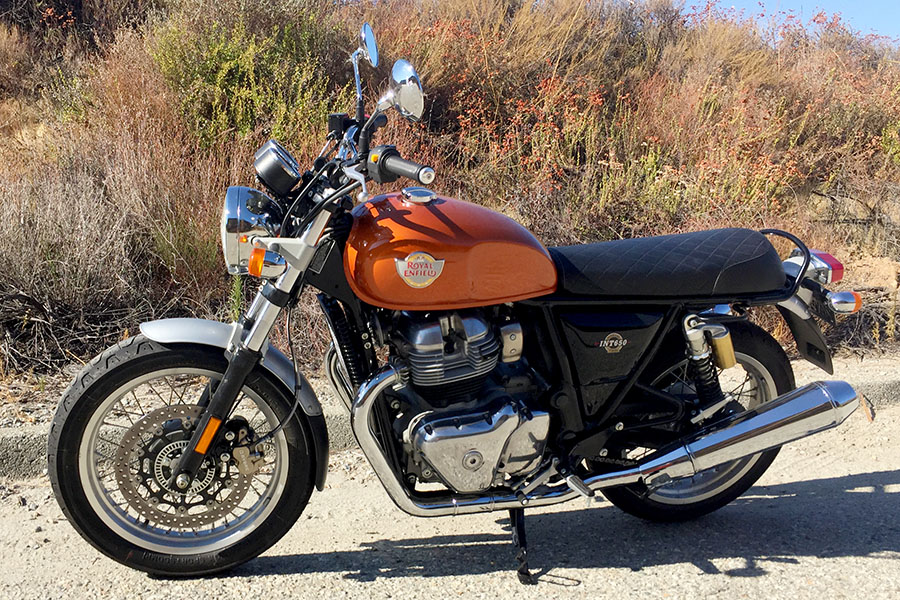Glendora Ridge Road is one of the best kept secrets in southern California, offering 12 miles of well-maintained, low-traffic twisties nestled in the San Gabriel Mountains. And it’s not just 12 miles…it’s 12 miles with 234 curves (I counted them) through some of the most beautiful country imaginable. The striking thing about this road is its simultaneous desolation and nearness to civilization. Glendora Ridge Road is only 45 minutes from downtown Los Angeles. It’s only 10 minutes from my front door. Given its magnificence and nearby location, you’d think I’d ride it every day. I don’t, but I should.
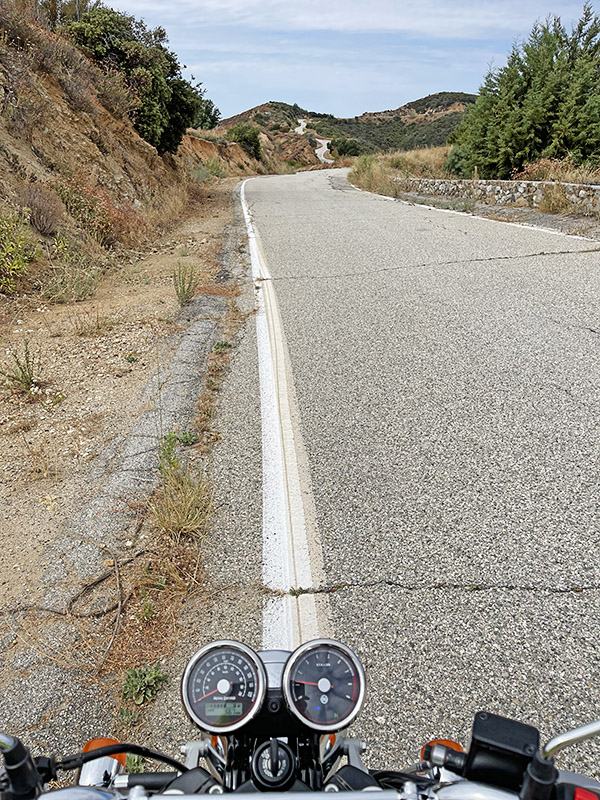
Glendora Ridge Road is a glorious ride, and it’s been a favorite ride for me ever since I arrived in California. It’s hard to believe just how good it is and just how much of a change it offers between what most folks think southern California is and pure wilderness. Like I said above, it starts just 10 minutes away from my home. Ride it and you enter a different world. When I rode it last week, I saw two other vehicles on the entire ride. One was a single-cylinder dual sport; the other was a red Ducati. That’s it: Just two vehicles, and both were motorcycles.
As is the case with many mountain paths, Glendora Ridge Road began life as a dirt road many decades ago. Situated high up in the Angeles National Forest, asphalt came to Glendora Ridge Road in the 1970s. There’s no centerline for most of its length, which requires extra care in navigating its many tight blind corners. Glendora Ridge Road attracts motorcyclists, bicyclists, and the odd sports car or two. We also get some ricky racers in modified Honda Civics and the like up in the San Gabriels, so caution is in order.

Glendora Ridge Road runs directly through one of the premier wildflower spots in America (the colors are surreal during April and May when the flowers are blooming…purples, reds, yellows, oranges, and more). Glendora Ridge Road also borders the San Dimas Experimental Forest, a 32-square mile research area. I’ve seen deer, fox, bobcat, bear, tarantulas, and snakes up there. I grabbed the tarantula shot above one evening in the pre-digital days with a 35mm Minolta and a 28mm lens. I had to get right on top of the spider to get that shot. I held the camera maybe six inches or so above it, only to later learn those things can jump 10 inches straight up!
I’ve ridden Glendora Ridge Road on virtually every motorcycle I’ve owned in the last 40 years. We used to do a lot of company rides with CSC Motorcycles, and everyone loved it. The RX3 is a perfect motorcycle for this ride. We once did a winter ride when the road was iced over. We rode it anyway.
The photo opportunities along Glendora Ridge Road are awesome. These days, I’m down to one motorcycle, and that’s my 650 Enfield. There are a lot of good spots for getting advertising quality photos on Glendora Ridge Road, and I took advantage of a few. Glendora Ridge Road has several areas where the cliffs and overhangs provide shade, so even on a bright day you can get great shots without harsh shadows

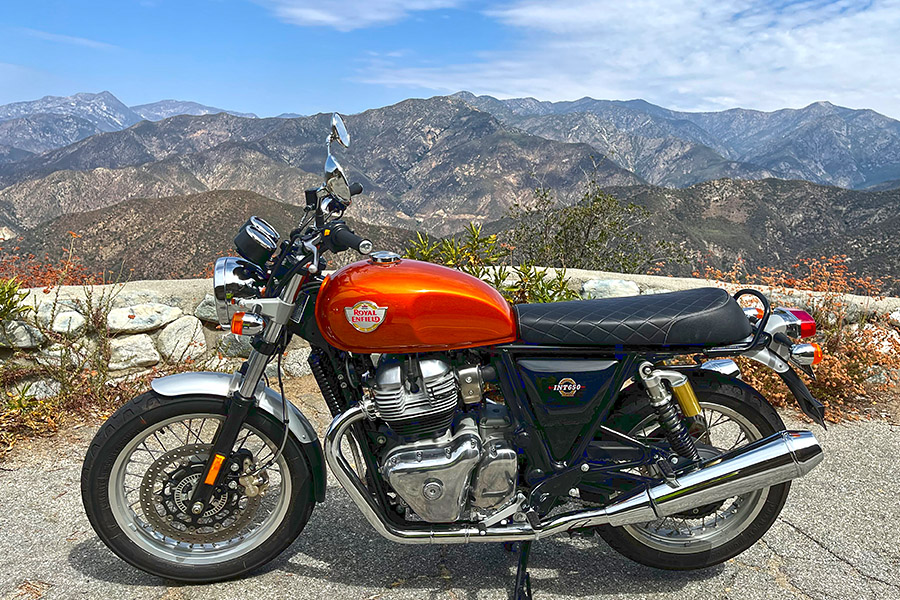
Glendora Ridge Road runs roughly east to west (or west to east, depending on which way you travel). I like riding this road in the early morning or at dusk, as it makes for a more interesting ride (fewer folks, and the wildlife is more active.) In the morning, it’s best to ride in a westerly direction to keep the sun out of your eyes, and vice versa at dusk. The road’s curves make it tempting to go faster than you should, but my advice is to keep a relaxed pace. Many of the corners are blind, and you never know if there’s a squid pushing too hard coming the other way.
Just as you enter Mt. Baldy Village, the sign for Glendora Ridge Road appears on the left (if you’re not looking for it, you may miss it). You’ll only climb about a half-mile before you hit Cow Canyon Saddle. It’s a neat place to get a feel for the length and breadth of the valley skirted by Glendora Ridge Road. There’s a dirt road on the other side of that valley, but it’s not open to the public (the dirt road runs about eight miles to an abandoned tungsten mine). After running west for exactly 12 miles (and as mentioned above, no fewer than 234 curves), you arrive at the intersection of Glendora Ridge Road, Glendora Mountain Road, and East Fork Road. Glendora Mountain Road meanders down into Glendora. If you turn right to take East Fork Road, it continues on to Highway 39 above Azusa. The intersection of these three roads is a popular meeting spot where riders stop to talk and take in the view. On clear days in the winter, you can see the Pacific Ocean and Catalina Island.
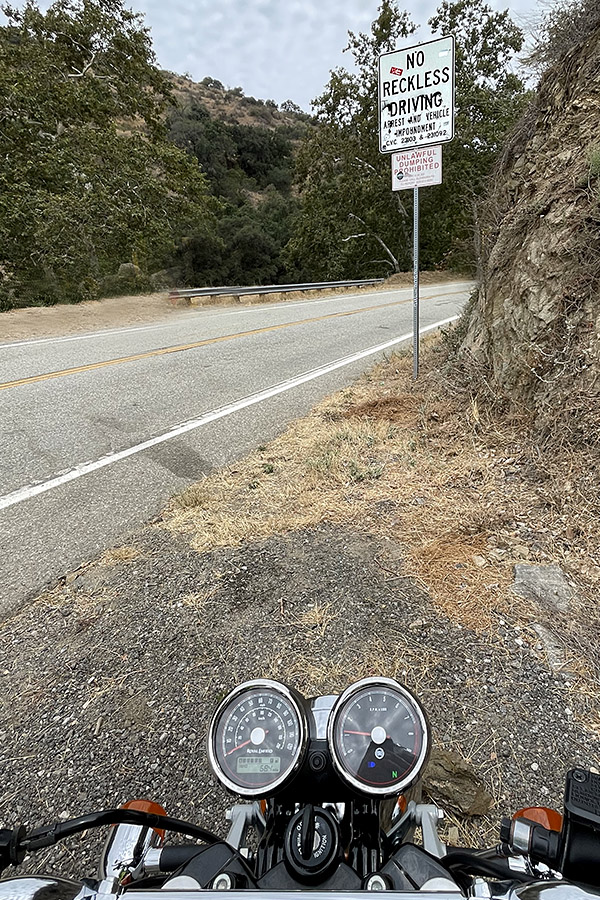
My choice for the return home on this most recent Enfield ride was Glendora Mountain Road. It’s equally scenic and a little shorter ride back. My arthritis was bothering me a bit and even though I was having a great time, my shoulder was reminding me I’m not 17 years old anymore. It was a good ride down out of the mountains. There are places on Glendora Mountain Road where you can see Highway 39 and the reservoir above Azusa, as shown in the photo below.
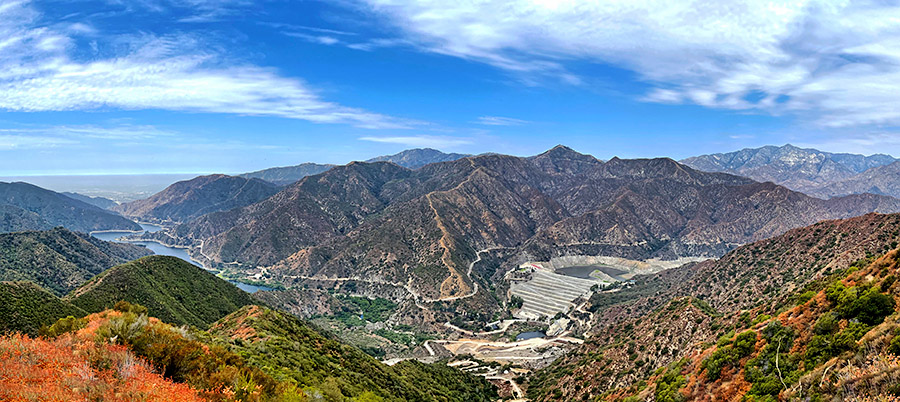
So there you have it: Glendora Ridge Road, one of So Cal’s best kept secrets. If you’re looking for a great ride, this is it. If you’re up there and you see an old guy on an Enfield nursing his left shoulder, give a wave.
Never miss an ExNotes blog:
You know what to do: Hit those popup ads!

